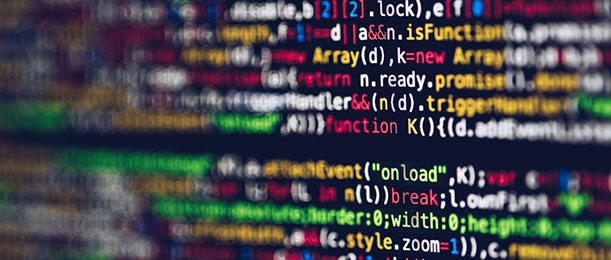BOOMbox at Home: Ciphers and Codes
December 2, 2020

This week, we’re exploring ciphers and codes.
Types of Ciphers
Many types of ciphers have been used to encode and decode messages throughout history. Some are fairly simple, others are more mathematically complex or require specialized knowledge. Try out scytale, a simple coding system believed to be invented by the Romans, and learn about other types of ciphers and how to create your own.
Morse Code
Morse code is a system of dots and dashes that was originally designed to transmit messages by telegraph. A specific pattern of dots and dashes is assigned to each letter of the alphabet. The complexity of the pattern is based on how often the letter is used. So, very common letters like "e" have simple patterns like a single dot, while more rare letters like "q" have longer patterns like dash dash dot dash.
After learning the Morse code alphabet, you can use it in many ways. Try sending messages to friends or family by blinking a flashlight or tapping a table. You can also incorporate Morse code into craft projects, including bracelets, blankets or scarves, and keychains. Using those examples as inspiration, incorporate Morse code into your own projects. It can be a focal point of the piece or a hidden message in the background. Get creative! What if you tried to incorporate Morse code into the rhythm of a song?
Enigma Machine
The Enigma was a powerful encryption tool used in World War II. This machine made it possible for messengers to quickly and easily convert messages into a code that was extremely difficult to crack. The Enigma could scramble a message in more than 150 quintillion ways. Attempts to crack the code led British mathematicians to invent the Bombe, the first electronic computer, which helped them read top-secret messages that were integral to the war effort. Although decrypting this code was a major feat of engineering, today you can make your own basic encryption device based on the Enigma machine using paper, tape, scissors, and an empty tube. Make your own Enigma Machine and learn more information about the history of this code.
Code Talkers
While the Allies were trying to decode messages encrypted by the Enigma machine, they were also sending their own coded messages using Native American languages. In both World War I and World War II, the United States recruited members of more than a dozen tribes, known as code talkers, to transmit messages in their languages. Two different types of codes were used. Type 2 messages were directly translated into an American Indian language, whereas Type 1 messages used more complex codes created by Navajos, Comanches, Hopis, and Meskwakis. For example, in the Navajo code, each letter of the English alphabet was assigned to a Navajo word, and messages were “spelled out” with these words.
Although they may sound simple, these messages were actually very difficult to crack and are believed to have played a critical role in destabilizing the German war machine. What made decoding these messages so challenging? The vast majority of people didn’t have the background knowledge they’d need to even get started. Someone not familiar with the language a code was based on would need to learn at least the basics of that language before they could begin to crack the codes. Practically everyone who knew these languages lived in North America, and even within the United States, Native Americans were discouraged from using these languages in their daily lives. Many young Native Americans, including some future code talkers, were forced to attend boarding schools where they were punished for using their native languages. Sadly, the work of code talkers was not fully acknowledged for many years, but, in 1968, the Navajo Code Talker dictionary was declassified and released to the public. Using the dictionary, try decoding these messages and writing your own.
Person of the Week
Carl Gorman was one of the 29 Najavos tasked with creating a secret code using their language. Gorman was born on a Navajo reservation in Arizona and grew up speaking both Navajo and English. As a boy, he was sent to an extremely strict boarding school. He ran away, and thankfully, his family allowed him to attend another school, where he thrived. In 1942, he enlisted in the U.S. Marine Corps. In addition to helping develop codes, he fought in several key battles before being forced to evacuate due to malaria (a life-threatening tropical disease) and shell shock (a mental health issue resulting from trauma, which is now called PTSD).
After the war, he worked as an artist and college professor, and helped document Navajo culture. He received several awards and honors, including an honorary doctorate. Three years after his death, his family accepted the Congressional Gold Medal on his behalf. You can learn more about Gorman and other code talkers from the National Museum of the American Indian.
Written by Eli and Erica.